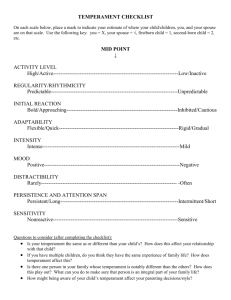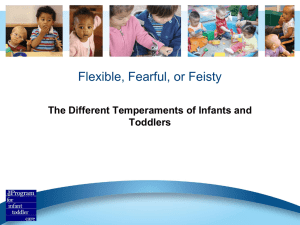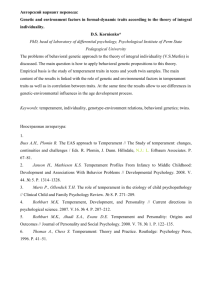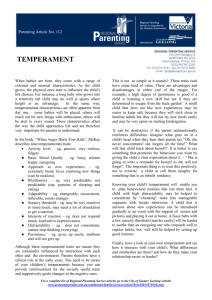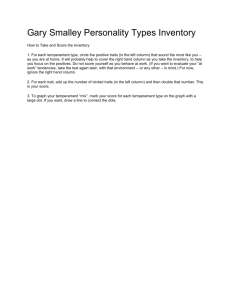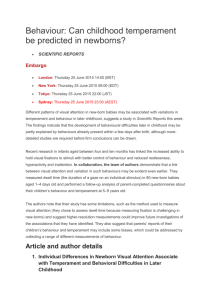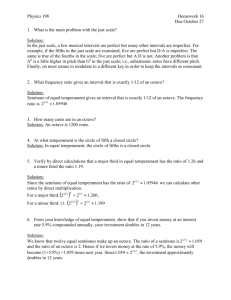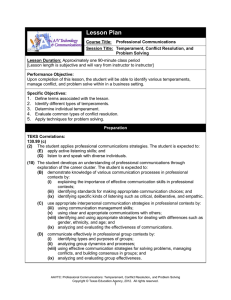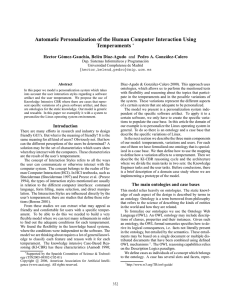Because Every Child is Special: Temperaments
advertisement
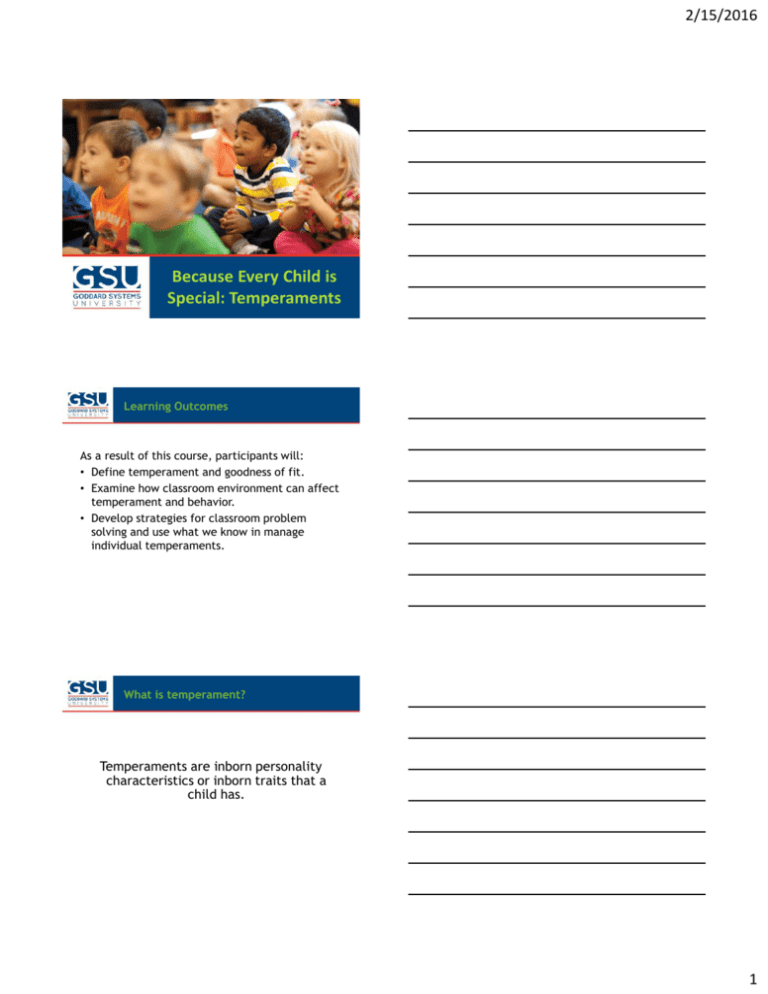
2/15/2016 Because Every Child is Special: Temperaments Learning Outcomes As a result of this course, participants will: • Define temperament and goodness of fit. • Examine how classroom environment can affect temperament and behavior. • Develop strategies for classroom problem solving and use what we know in manage individual temperaments. What is temperament? Temperaments are inborn personality characteristics or inborn traits that a child has. 1 2/15/2016 Temperament Types Traits combine to form three basic types of temperaments: • Easy or flexible • Feisty or Spirited • Slow to warm up or cautious The Flexible Child • Laid-back, easy-going • As many as 40% of children are flexible • Typically have regular feeding and napping routines, are easily toilet trained, and are generally cheerful. The Flexible Child • Seldom make a fuss • Want attention from a caregiver, but may only communicate this need with an occasional glance or wave of the hand 2 2/15/2016 Caregiving Techniques for the Flexible Child • Check in with the child regularly • Set aside special time • Realize that they still need intimate contact The Feisty Child A feisty child is a child that has a lot of energy, high activity level, and is fairly sensitive to stimulation. The Feisty Child • About 10% of children fit into this category. • Tend to live with zest and let everyone know when they are pleased or displeased. • Tend to be intense and can sometimes be a handful. 3 2/15/2016 Caregiving Techniques for the Feisty Child • • • • • Redirection Remain flexible Anticipate transitions Maintain peaceful, calm surroundings Provide opportunities for active and invigorating play. The Fearful Child • Slow to warm up to their environment • Once comfortable, engaged in their environment. The Fearful Child • About 15% of all children fall into this category • Need more time and attention to warm up to a new situation or to new people • Tend to adapt slowly and/or withdraw 4 2/15/2016 Caregiving Techniques for the Fearful Child • Draw the child in slowly • Allow independence to unfold • Take the child to the activity, step back, remain available. • Set up the environment so that things are in the same place • Assign a primary caregiver Things to Remember • Temperament is inborn. • Is formed based on a child’s prenatal experience. • Is not anyone’s fault. • Traits can exist along a continuum from high to low. May result in a child having some difficulty with self-regulation. Temperaments and adulthood • Stays with us throughout our lifetime • As adults, we learn to cope with and/or adapt to our temperament style • As adults, it is our responsibility to adapt our temperament to meet the needs of the children that we care for • Understanding temperament is the key to forming relationships Temperaments Video: Dr. Diane Philipp 5 2/15/2016 Goodness of fit What is goodness of fit?? Creating Goodness of Fit • How well a teacher or parent can recognize and respond or adapt to a child’s temperament. • Requires working with, not against, a child’s temperament. • It is the adult’s responsibility to make changes in her own style of relating as well we in the environment . ACTIVITY: Creating a Good Fit I know that I have a high energy level. When I am with a child who dawdles, I need to… 6 2/15/2016 ACTIVITY: Creating a Good Fit I know that I prefer quiet games. When I am with a child who likes to run and climb, I need to…. ACTIVITY: Creating a Good Fit I know that I am sensitive to noise. When I am with a child who has a loud, irritating voice, I need to… ACTIVITY: Creating a Good Fit I know that I am generally eager to try new things. When I am with a child who is overly cautious when a new activity is introduced, I need to…. 7 2/15/2016 ACTIVITY: Creating a Good Fit I know that I feel better when I have a regular daily routine. When I am with a child whose irregular eating and sleeping patterns disrupt schedules, I need to… Promote a better fit • Become aware of your own temperament. • Become aware of the children’s temperament in your group. • Use what you know about the child. • Help families see temperament as an asset. Addressing behavior and temperament • Adopt a philosophy that focuses on ensuring all children will be successful in your program. • All children belong • All children are supported • Teachers are supported • Work with families as partners in supporting children’s success 8 2/15/2016 Program wide expectations • Develop expectations for children’s behavior • Be proactive about promoting the expectations and sharing information with families. — Specific rules — Use soft touches — Quiet voices — Walking feet — Be a team player • Expectations reflect a positive approach to behavior by focusing on teaching children what to do. Children are likely to cooperate when adults… • • • • Help children anticipate what is expected Use positive language Explain in brief and simple terms why Give doable, not overwhelming tasks • Give limited and valid choices Children will listen when… • Select only a few issues for limit setting • Help children become aware of how their behavior affects others. • Tell children what they can do, not just what they can’t • Establish consequences • Teach problem solving Working with Temperaments 9 2/15/2016 Teach problem-solving skills • Describe the problem and the rule. • Ask children of think of ways to solve the problem. • Evaluate what would work. • Pick the best solution. Learning Outcomes As a result of this course, participants will: • Define temperament and goodness of fit. • Examine how classroom environment can affect temperament and behavior. • Develop strategies for classroom problem solving and use what we know in manage individual temperaments. Questions, Comments, 10
